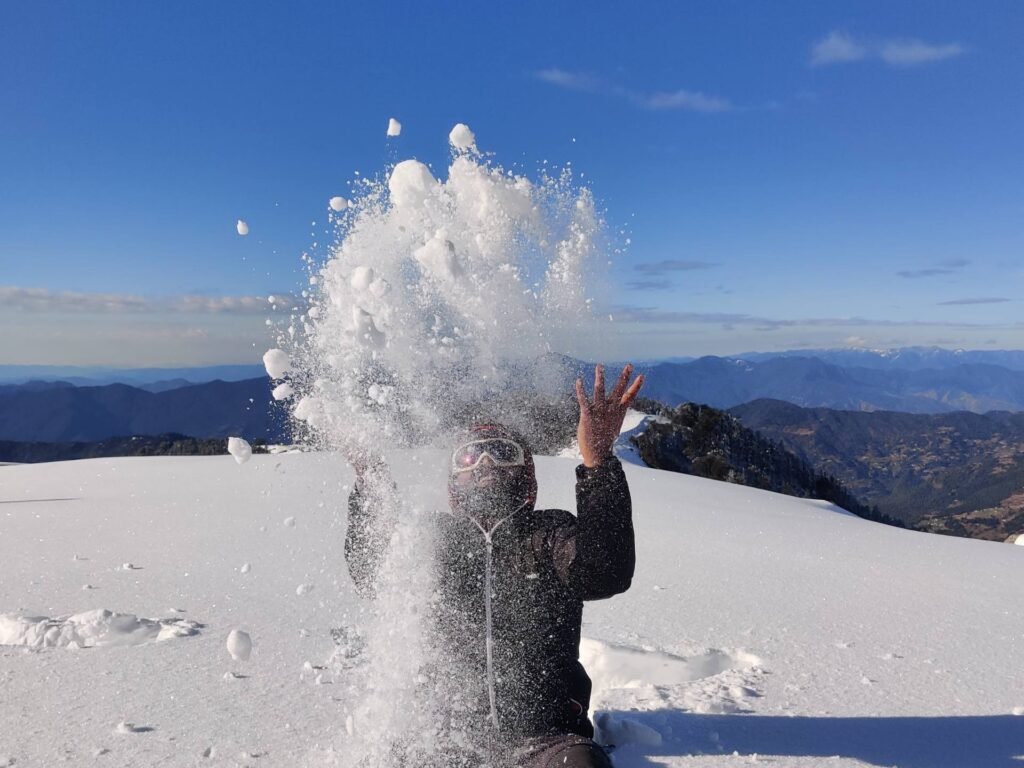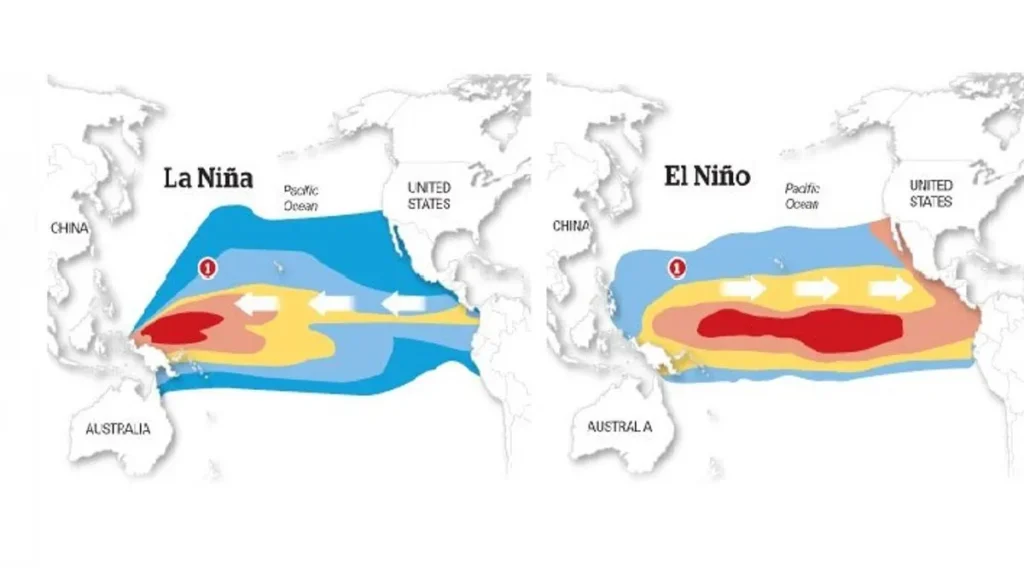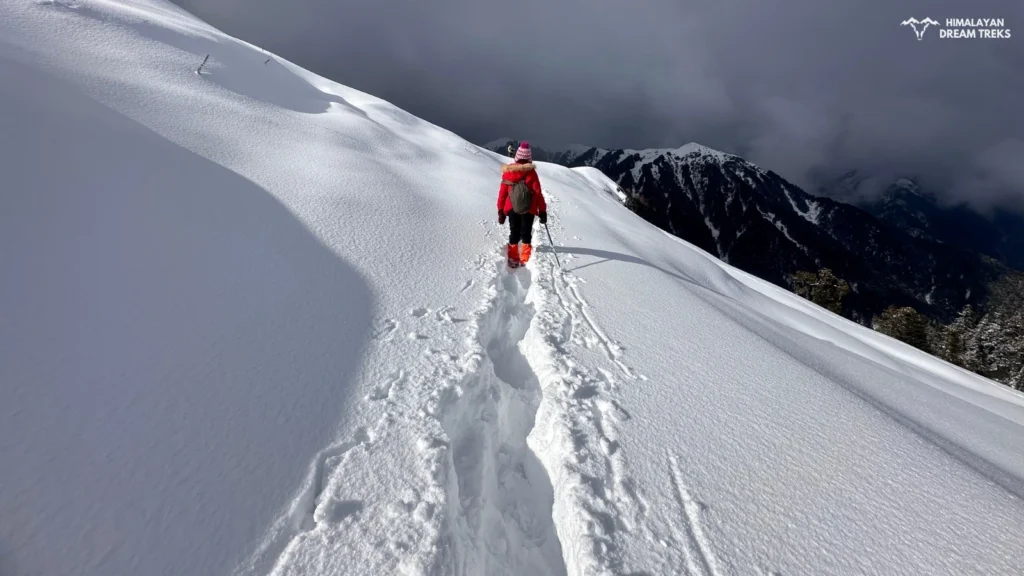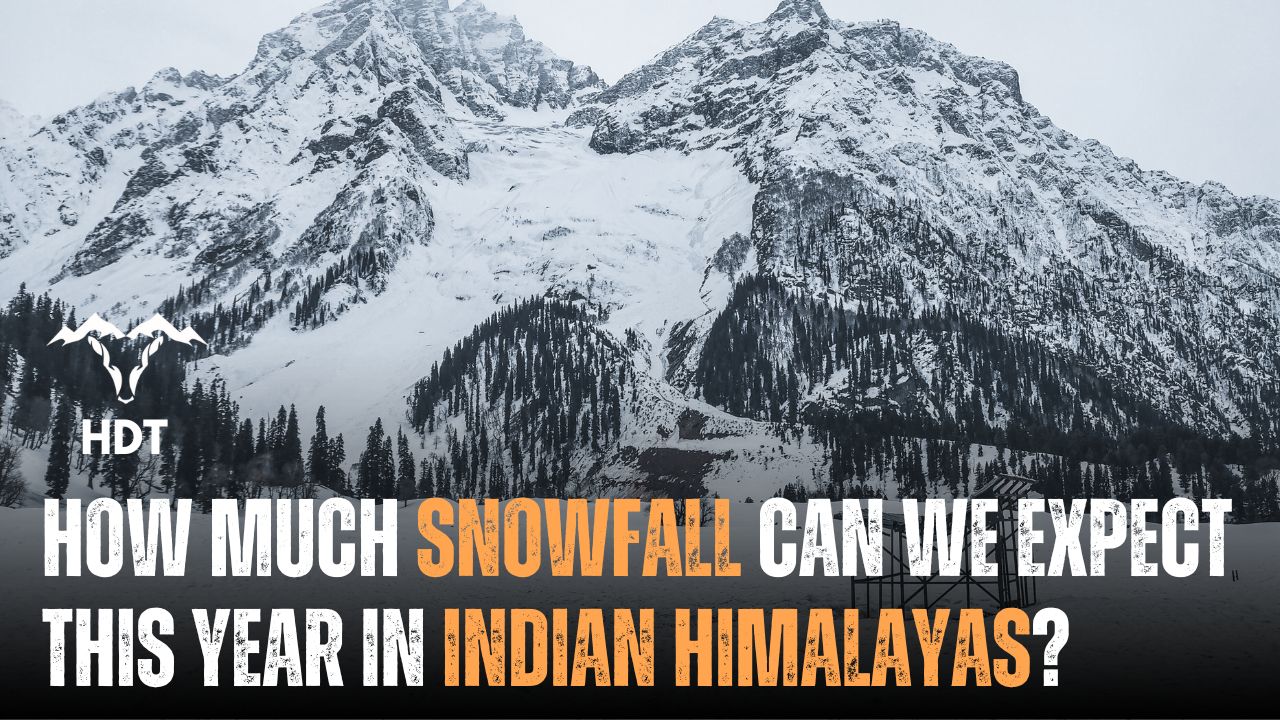With the beginning of the winter season, all eyes are on the weather forecast applications and channels, in expectation of snowfall. Though it is true that there is a lot more to winters than snowfall, it is one of the major attractions. People save up throughout the year at times to enjoy a vacation amidst the snow-clad mountains of Himalayas. After a major disappointment in 2023, this year brings in a lot of hope.
If you are also one of those looking for an adequate analysis of snowfall in 2024, we are here with a compilation of all the available data – including past and present analysis. Read on to better plan your upcoming winter vacations!

Factors Affecting the Amount of Snowfall
When temperatures drop below a certain mark and hilly areas experience rains due to the various weather parameters falling in line, we experience snowfall. This is not as simple as it sounds, with a lot of geographical and meteorological factors at play. For the Indian Himalayas and surrounding regions, the following would make all the difference:
a) Wind effects
The hilly areas do not have any direct source of rainfall. They are dependent on the wind effects which bring moisture with them and extract dryness from the weather. As far as the Himalayas are concerned, El Nino and La Nina effects have had a considerable impact for centuries. Given the recent trend, La Nina would be responsible for a heavy snowfall expectation. Read on to know more about how these two have shaped the fate of the Himalayas, and continue to do so.
b) Western disturbances
Almost all the precipitation that takes place in India is due to western disturbances. These winds carry moisture with them and come down as rainfall when they come in contact with hilly areas or witness any pressure variations. If western disturbances stay (as they are expected to), snowfall will be abundant. The opposite of this is also true.

c) Global warming
As we have already turned from a moderate temperature country to an overly warm nation, the winter temperatures have also seen a rise. For snowfall, the most important factor is a drop in temperature so that the droplets can freeze before reaching the surface. Though it is true that we have not had a year with no snowfall yet, 2023 was a disappointment for many.
d) Overall climate change
With glaciers melting and the pollution levels rising, the average temperature of the country is rising. That being set, the areas that receive snowfall are decreasing in terms of acres. On the other hand, the fluctuations in temperature have made it difficult to predict the weather.
Decoding The La Nina Effect
Wind patterns La Nina and El Nino are weather-controlling phenomena that affect what happens around the world. Though the transgression involves a lot of scientific terms and history has not been quite favorable in terms of calamities brought by weather fluctuations, these two have had a dominant role in changing the geographical trends of weather all across the world.
In a nutshell, the present effect of La Nina is causing heavy rainfall and floods on one side of the Pacific Ocean (which includes India). This is the reason why weather predictions regarding snowfall in the Himalayas are tilting on the positive side. There is an expectation of a tourism boom, as well as the risk of sub zero temperatures which might make life difficult for a lot of people. On the other side of the Pacific Ocean (America, etc), temperatures are soaring and it is so dry that countries are dealing with wildfires.
El Nino vs La Nina
Even though they sound similar to each other, the effects are not at all similar. El Nino was the main reason why 2023-2024 was lacking snowfall, even during Christmas and New Year in the most expected areas. When we talk about 2024, the El Nino effect is no more dominant. As per the recent research published by the Indian Meteorological Department, there is a transition from El Nino to La Nina.

In layman’s terms, El Nino is responsible for dry winters with short spells of snowfall, while the opposite is true for La Nina. This is indeed, good news for all Indian tourists and those planning to visit India to experience the beauty of the Himalayan hills, when they are snow-clad and look no less than heaven on earth.
To enhance your understanding of these two effects, in short, have a look at the following table:
| El Nino | La Nina | |
| Dominant in Year | 2023 | 2024–25 |
| Effect on Snowfall | More snowfall in the Himalayas | Winter temperatures stay moderate with an average dip in mercury |
| Effect on Crops | Low produce | Better produce |
| Main Reason for Change | Western disturbances are deflected | Western disturbances stay concentrated and fall as rain in South India and snowfall in North India |
| Temperature Fluctuations | Winter temperatures stay moderate with average dip in mercury | Lower temperatures than normal, further fluctuations due to snowfall |
Overall Weather Conditions: 2024
The end of 2024 and the beginning of 2025 is going to be colder than normal. If you are also amongst the folks thinking that winters would not be that harsh because they began late, it is time to rethink the trends. In most parts of northern India, mid October and November were declared as the hottest this year.
Irrespective of the late beginning of winters, temperatures dipped rapidly and we saw early snowfall. This is a clear indication of the fact that this year is going to be full of surprises. We can expect snowfall from December to early February in the Himalayas, with temperatures reaching the sub–zero levels. So, it would not be a good idea to postpone your treks at this point, thinking there would be no snowfall.
The early snowfall also attributes its ascent to the fluctuations in Western Disturbances. Though low lying areas did not observe much difference, the hill stations were experiencing single-digit temperatures while the valleys felt the first chilly winds along with slight rainfall. In open areas of Manali, Shimla, and Kashmir, temperatures reached zero degrees and even below during the early December spell. With a little respite for now, these temperatures will further dip in the third week, with lots of snowfall following the dip.

Snowfall in 2024-25: A Rough Estimate
The first and second weeks of December experienced the first snowfall of this season in areas like Shimla, Manali and Kashmir. The surrounding areas also got their share. In addition to this, the temperatures have remained constant. As opposed to the lack of snowfall in 2023, this year is expected to be much colder and a lot of precipitation is expected in the upcoming weeks.
The optimum time for witnessing snowfall would be between the 22nd of December and the 12th of January.
Though regular snowfall is not guaranteed, this time frame would be the most dense. As far as the amount is concerned, we already witnessed white hills in the second week of December. The density would be dependent on the combination of factors like winds and temperature fluctuations. For a rough estimate, you can expect above-average snowfall in the Indian Himalayas and should plan your trip likewise.
Conclusion
Amidst fluctuating conditions and a dip in temperatures, we know one thing for sure – there is going to be a lot of snowfall in the Himalayas, even if scattered. Early December snowfall’s charm hit the hill stations like a blessing. For the tourists as well as farmers and other seasonal operators. In addition to the December delight, 2025 is definitely going to be a favorable year, as per the predictions.
Due to early surprises and unfavorable conditions, there have been a number of bans near the Himalayan region in the recent past. Either way, it is better to look out for government directions and a quick glimpse at your weather app before packing your bags and heading towards the hills. Follow this space for more information regarding snowfall, and everything associated with it.

Leave a Comment